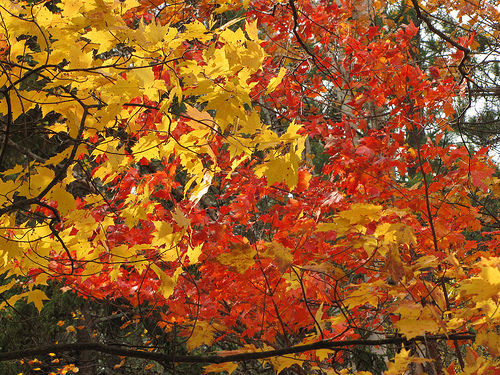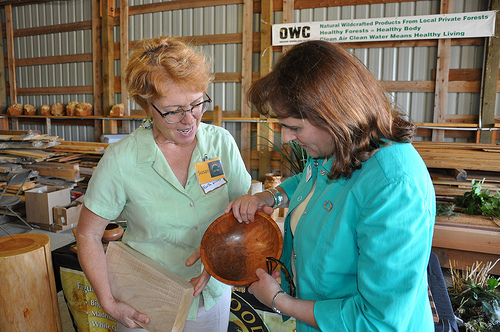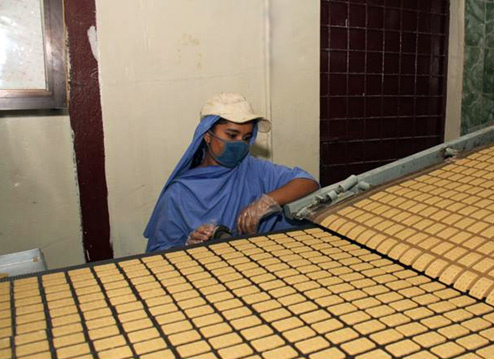On October 16, World Food Day, it is hard to not be struck by how lucky we are in the United States. We have abundant food that costs us less to produce, on a per unit basis, than almost any other country in the world. Our farmers and ranchers produce more than we need, allowing us to be a powerhouse in global exports. And our food supply is among the safest of all the world’s nations.
All that abundance and security has been underpinned by science and know-how. Between the 1940s and the 1970s, agriculture science blossomed in what has become known as the Green Revolution. Thanks to the research done by Norman Borlaug, the “Father of the Green Revolution,” working with researchers around the world, developed high-yielding varieties and modern production practices that helped save untold numbers of people from starvation. Read more »

Maples show a variety of colors on the Superior National Forest. Photo: Steve Robertsen, District Interpreter, Tofte Ranger District of the Superior National Forest
Every fall, nature puts on a dazzling show across America’s great outdoors for all of us to see.
Whether you’re an adventurist or someone who just likes a good road trip, national forests are the places to be this time of year. Read more »

Susan Curington of North Woods Figured Wood (left) shows State Director Vicki Walker (right) how the family business “upcycles” burls, stumps and small, odd-shaped, or difficult-to-use wood pieces to be sold at premium prices to carvers and other hobbyists. USDA photo.
At a recent expo held by the Oregon Woodland Cooperative (OWC), I had the opportunity to meet with a number of family forest landowners who are cultivating additional commercial ventures thanks, in part, to USDA’s Value Added Producer Grant (VAPG) program.
At the event, OWC President Neil Schroeder introduced me to cooperative members who have sprouted new businesses and created local jobs as a result. The terrific part of all this is that USDA’s VAPG program provided funds needed to conduct the in-field assessments, feasibility studies, business planning, and marketing activities needed to identify, process and sell new, non-lumber products harvested from Oregon’s family forests. Read more »

A Bangladeshi factory worker monitors the production of biscuits made from U.S. donated wheat. The donation was delivered to the World Food Programme, a Foreign Agricultural Service (FAS) McGovern-Dole program participant that works to provide food assistance in more than 73 countries. The biscuits will be distributed to about 2,000 schools in the poorest areas of Bangladesh. (Photo courtesy U.S. Embassy New Dehli)
Approximately 350,000 school children in Bangladesh now have access to a daily snack after the U.S. government recently donated more than 10,000 metric tons of wheat to the country through the Foreign Agricultural Service’s (FAS) McGovern-Dole Food for Education Program. Read more »
Tags: Bangladesh, Dan W. Mozena, FAS, Feed the Future, Food Security, George McGovern, McGovern-Dole Food for Education Program, President Obama, Trade, World Food Prgoramme
 Food Security, International, Trade
Food Security, International, Trade
This post is part of the Science Tuesday feature series on the USDA blog. Check back each week as we showcase stories and news from USDA’s rich science and research profile.
Organic agriculture is proving itself to be a veritable cornucopia, according to the results of the first-ever report on certified USDA organic production, which we released earlier this month. While the number of organic farms is a fraction of its conventional counterpart, an organically produced version of virtually every crop or animal product is now available in the United States.
This was the first time the National Agricultural Statistics Service (NASS) conducted this survey, which means that we cannot see trends yet, but we can already easily see some of the impacts of organic production in the United States. From four farms in Alabama, Alaska or Delaware to 1,898 farms in California, every state in the nation is now home to USDA-certified organic producers. And while these farmers make up less than a half of one percent of all U.S. farmers, they already sell more than $3.5 billion worth of agricultural products. Read more »



